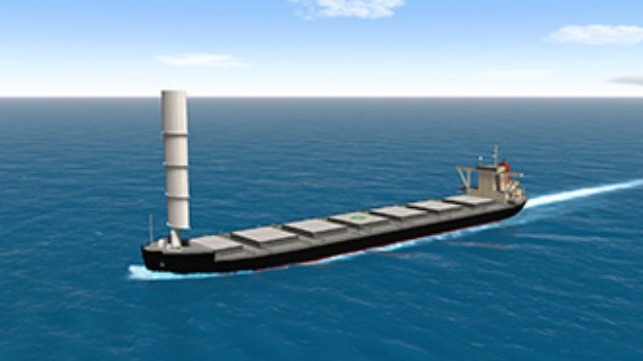MOL and Enviva Exploring Bulk Carrier Designs to Reduce Emissions

Japan’s Mitsui O.S.K. Lines (MOL) is continuing its effort to develop new generations of shipping designed to meet the challenges of reducing greenhouse gas (GHG) emissions. In its newest effort, MOL will be working with its long-term customer Enviva, a global renewable energy company specializing in sustainable wood bioenergy, to develop and deploy an environmentally friendly bulk carrier. The goal of the program is to reduce GHG emissions in the ocean transportation of sustainable wood pellets.
“Enviva is very excited to partner with MOL on this innovative project to reduce greenhouse gas emissions in our supply chain,” said Thomas Meth, Executive Vice President, Sales and Marketing of Enviva. “In our recently announced goal of achieving net-zero greenhouse gas emissions by 2030, we committed to proactively engage with our partners and other key stakeholders to adopt clean energy solutions in our supply chain and this is one of the first opportunities for us to explore carbon reductions in our Scope 3 emissions.”
The partnership in its initial stages will explore the environmental benefits, commercial and operational feasibilities of various technologies. Among the technologies they plan to review is the Wind Challenger, a cargo ship design that incorporates a hard sail that MOL has been working on in a cross-industry partnership.
“We are truly excited about this partnership, and it comes at a perfect timing as we start our new business entity, MOL Drybulk,” said Toshiaki Tanaka, Managing Executive Officer and Chief Environment and Sustainability Officer of MOL. “MOL Drybulk will aim to provide solutions to meet the various needs of our customers, including the reduction of emissions from our shipping service. This is not an easy challenge, especially when we aim to introduce new technologies such as the Wind Challenger. It is extremely encouraging to have Enviva as our partner, whose core mission is to fight climate change.”
Plans to develop the Wind Challenger started in 2009 as an industry-academia joint research project led by the University of Tokyo. MOL took charge of the plan in 2018 and has been working on the technology.
The first Wind Challenger is scheduled to be introduced in 2022. The system converts wind energy to propulsive force through the use of a telescopic hard sail. In December 2020, MOL announced that it had reached a coal transport deal with Tohoku Electric Power Co. for the deployment of the first vessel equipped with the wind challenger technology.
